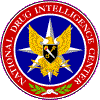
Rocky Mountain High Intensity Drug Trafficking Area Drug Market Analysis
June 2007
Drug Trafficking Organizations
Mexican DTOs and criminal groups control most of the transportation and wholesale distribution of methamphetamine, cocaine, heroin, and marijuana in the Rocky Mountain HIDTA region. They maintain connections to sources of supply--often friends or family members--in Mexico, California, Washington, and the Southwest Border area. Mexican DTOs routinely alter their methods of operation to avoid law enforcement detection during the course of their drug trafficking activities. They often compartmentalize drug and bulk currency transportation cells to limit members' knowledge of the organization's activities and to avoid collocation of drugs and money. When arrested, Mexican DTO members offer little information to law enforcement personnel because members possess limited knowledge of the organization's operations. Moreover, Mexican DTO members easily assimilate into the large Mexican population in the region and often engage in identity theft and use forged documentation, further complicating efforts to identify these individuals. Mexican DTOs and criminal groups also exploit tribal lands in and adjacent to the Rocky Mountain HIDTA region to facilitate their illicit drug operations and evade law enforcement detection.
Asian DTOs and criminal groups are the primary suppliers of high-potency Canadian marijuana (also known as BC Bud) and MDMA in the Rocky Mountain HIDTA region. However, these DTOs are considered a much lower organizational threat by law enforcement officials than are Mexican DTOs and criminal groups. Asian traffickers transport wholesale quantities of BC Bud and MDMA from Canada through Washington into the region for local distribution and for shipment to markets outside the region, primarily in the Midwest and East. They also smuggle these drugs across the U.S.-Canada border in Montana. Law enforcement officials in northwestern Montana report an increase in larger marijuana shipments by Asian traffickers from Canada using fixed-wing aircraft, floatplanes, and helicopters to cross the border. Officials also report that some traffickers hire local individuals as "mules" to cross the northern border in Montana between POEs while carrying 50- to 100-pound quantities of BC Bud, typically in sports equipment bags. These loads are often transported by private vehicles, ATVs, and snowmobiles, as well as on foot. Most of the high-potency marijuana smuggled across the border is transported to distribution centers such as Denver; Salt Lake City; Las Vegas, Nevada; and Los Angeles and San Francisco, California.
Hispanic (primarily Mexican), African American, and Asian street gangs are the principal retail-level drug distributors in the Rocky Mountain HIDTA region. These gangs are responsible for most of the violent crimes, including assaults, home invasions, and homicides, that take place in metropolitan areas of the region; most violent crime perpetrated by these street gangs relates to drug operations and protection of their distribution areas. Hispanic gangs such as Sureņos 13 distribute methamphetamine, cocaine, heroin, and marijuana that they receive from Mexican traffickers. African American street gangs such as Rolling 30's Crips are the primary converters and distributors of crack cocaine in metropolitan areas of the region. Additionally, African American street gangs in Denver distribute PCP (phencyclidine) that they acquire from gang associates who produce the drug in Los Angeles.
Members of outlaw motorcycle gangs (OMGs) such as Bandidos, Hells Angels Motorcycle Club (HAMC), Outlaws, and Sons of Silence distribute methamphetamine and BC Bud in some areas of the region. These OMG members obtain methamphetamine from Mexican traffickers in the area and also transport the drug from California and southwestern states. Members of HAMC, who smuggle significant quantities of BC Bud from Canada into the United States, often cross the Northern Border in British Columbia to enter Washington but more often smuggle the drug from Canada directly into the HIDTA region in Montana.